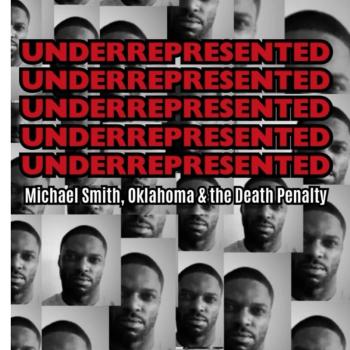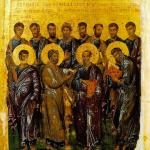
From 2012 to 2017, I watched Lena Dunham’s Girls as it aired on HBO. In the show, which was about four female 20-somethings with a host of mental, emotional, and interpersonal issues trying to make it in Brooklyn, Dunham played Hannah Horvath, a fledgling writer who was supposed to have graduated from college in 2010 (the year after I did). The show opens with Horvath, who is an only child from Michigan, being financially cut off by her parents and then continues to follow her romantic, professional, and interpersonal ups and downs over the course of its six seasons.
The wide (and mostly justified) criticism Dunham received throughout the 2010s for both the show and her off-screen comments came from both the political left (which fretted about Girls’ lack of diversity and its biting, non-PC humor) and the political right (which was horrified by the show’s apparent endorsement of loveless sex, aimless youth, and Dunham’s own constant nudity). For critics of all ideological stripes, Horvath’s—and Dunham’s—solipsism, myopia, reductivism, and narcissism proved both maddening and riveting.
Years ago, when I watched Girls each week as it was released (which I did, religiously) my contempt for Hannah and her friends was near total.
I got married in 2012, at 25; by the time the show concluded in 2017, I was 30, with two small children and a full-time job. I knew that “conventional” lives like mine were the show’s unspoken foil, and that women like me were Horvath’s cast-off alter-egos. After all, I was beholden to exactly zero of the navel-gazing and wandering that characterized Girls’ protagonists.
Despite my centrist politics and conservative personality, I do have a capacious and apolitical appetite for art—including art I find personally or politically repugnant. But when it came to this show and the sensibility it espoused, I knew that I was the opposition. So, while I watched Girls for its incisive cultural commentary and its clever, witty dialogue, I cringed while I watched.
This spring, having recently welcomed a new baby and wanting something less than demanding to view while feeding him and folding endless laundry, I rewatched Dunham’s show.
Now 36 and a stay-at-home mom with four kids, my life has only grown ever further away from the Girls’ perspective and plotlines. And yet, I don’t feel so much like the opposition anymore.
Maybe it’s easier to view self-absorbed 20-somethings with charity rather than contempt because I’m no longer their peer. Or maybe the world has spun so much further off its axis in the past few years that what was decadent in 2012 now feels more “with us” than “against us.”
Whatever the reason, I can say that with the benefit of new context, two things about the series really stood out for me this time through—and not in a bad way.
First, there is the humor. Amidst growing laments about the death of comedy due to Gen Z’s inability to laugh at anything (least of all themselves), the jokes in Girls that felt merely edgy in the 2010’s now feel positively counter-cultural. The show opens with jibes about how unattractive liberal women actually find emasculated, post-modern men and indulges in copious amounts of equal opportunity stereotyping at the expense of entitled young adults. It also pokes irreverent fun at hipsters and “non-binary” people, and unsparingly mocks the pseudo-intellectual pretension of many graduate school programs in the liberal arts.
Second and perhaps more importantly, there is the ending. At the conclusion of the series, Shoshanna is 27 and Jessa, Hannah, and Marnie are 29. Shoshanna has deliberately moved on from her erstwhile friends to get married and form a new social circle. After a failed marriage, drug relapses, and countless romantic dumpster fires, Jessa has matured into a monogamous and honest relationship with Adam, Hannah’s ex-boyfriend, and has apologized to Hannah for this irreversible betrayal that has permanently distanced them from each other. Hannah finds herself a single mother, having resolved to keep the baby that resulted from a one-night stand with a surf instructor, and leaves Brooklyn to settle upstate, where she’s found a teaching job with insurance and can afford to care for her child given the lower cost of living.
Finally, Marnie, who like Jessa has already gone through a divorce, initially takes aboard the responsibility of helping Hannah care for her baby, but ultimately recognizes that she needs to figure out her own next steps and floats to Hannah’s mom, Loreen, the idea of law school. In response, Loreen tells Marnie that maybe she should be a judge. In one of the most (perhaps unintentionally) revealing lines of the show, Loreen explains that she has a friend who is “a gas,” with “spray tanner” and “a big diamond in her upper ear cartilage” and who nonetheless is “a really good judge.” In other words: the kooky unconventionality that the series valorizes is mostly just aesthetic; it can and ultimately should coexist with conventional professions, with marriage, and with motherhood.
Today, we have ever fewer 29-year-olds so much as considering marriage or motherhood. So, somehow, in the span of less than a decade, the (very!) extended—but ultimately finite—adolescence featured on Girls seems almost like a throwback.
This is not a show for which I ever expected to feel nostalgia. But here we are. I guess it’s a good reminder that things can, in fact, always get worse. Which means they can also always get better—and that there are sometimes unexpected reserves of good in what may seem all bad.
Here’s hoping.

















